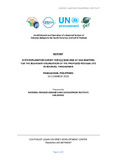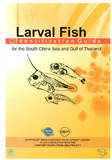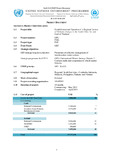Species Composition, Abundance and Distribution of Cephalopod Paralarvae in the South China Sea: Sabah, Sarawak (Malaysia) and Brunei Darussalam Waters
Share
| dc.contributor.author | Thapthim, Narumon | |
| dc.date.accessioned | 2018-03-17T15:37:01Z | |
| dc.date.available | 2018-03-17T15:37:01Z | |
| dc.date.issued | 2002-03 | |
| dc.identifier.uri | http://hdl.handle.net/20.500.12067/439 | |
| dc.description.abstract | Samples from 20 stations in Sabah, Sarawak (Malaysia) and Brunei Darussalam Waters were collected between 20th March - 1st April 2000. At each station one oblique haul of the bongo net was made from 100 meters deep to the surface. The ship's speed was about two knots. There were one hundred and fifty two specimens of cephalopod paralarvae and these were identified into twenty species of nine families. The most abundant was the family Enoploteuthidae (41.59%) followed by Ommastrephidae (25.64%), Octopodidae (16.74%), Loliginidae (6.99%), Cranchiidae (5.73%), Sepiolidae (1.38%), Octopodoteuthidae (1.12%), Onychoteuthidae (0.46%) and Gonatidae (0.33%). The distribution pattern of the cephalopod paralarvae in this study area was scattered both inshore and offshore, especially in the northern part of survey area. | en |
| dc.language.iso | en | en |
| dc.publisher | Training Department, Southeast Asian Fisheries Development Center | en |
| dc.subject | Species Composition | en |
| dc.subject | THE SOUTH CHINA SEA | en |
| dc.subject | SABAH | en |
| dc.subject | SARAWAK | en |
| dc.subject | Cephalopod | en |
| dc.subject | Paralaevae | en |
| dc.subject | Abundance | en |
| dc.subject | Distribution and South China Sea | en |
| dc.title | Species Composition, Abundance and Distribution of Cephalopod Paralarvae in the South China Sea: Sabah, Sarawak (Malaysia) and Brunei Darussalam Waters | en |
このアイテムのファイル
このアイテムは次のコレクションに所属しています
-
Fishery Biology [22]




